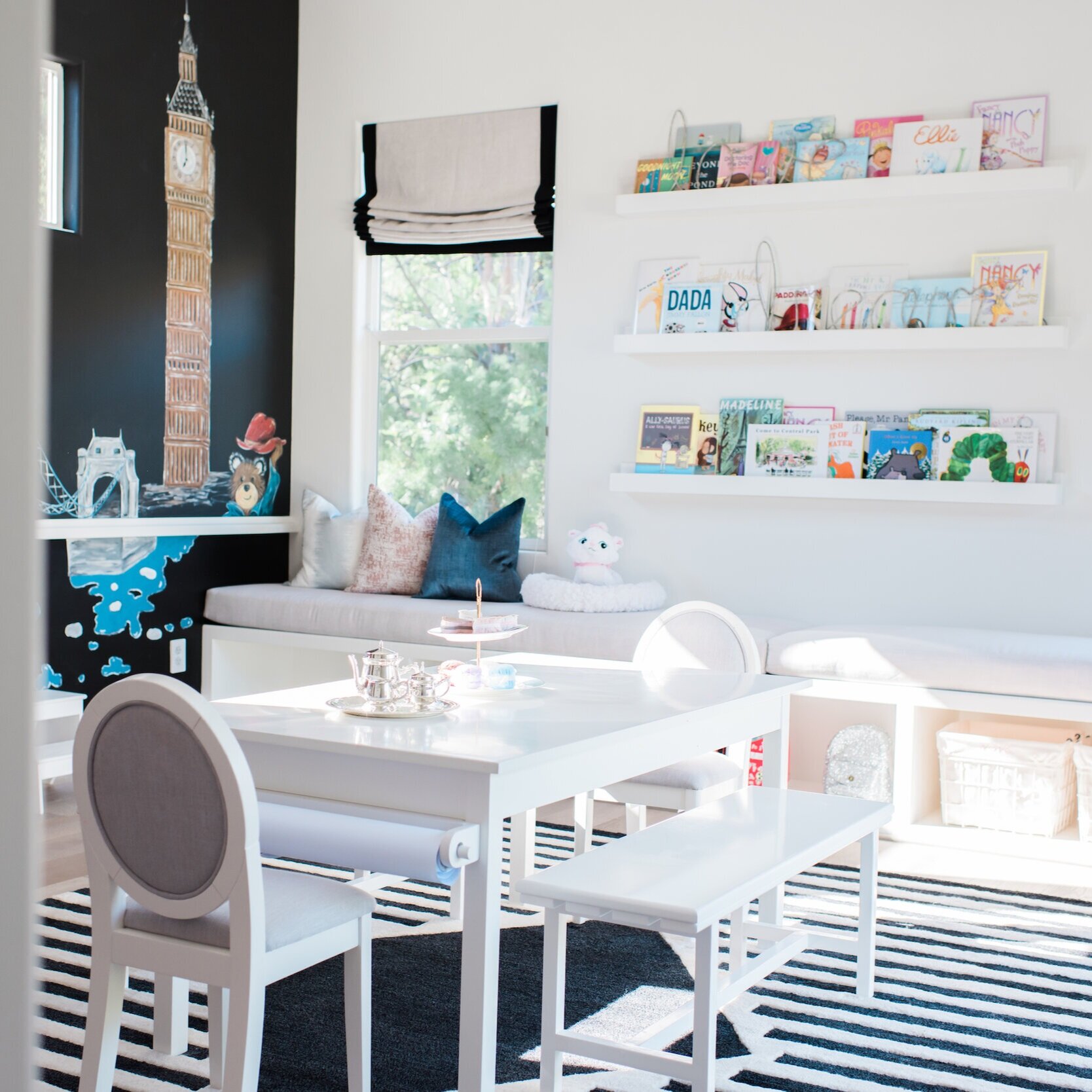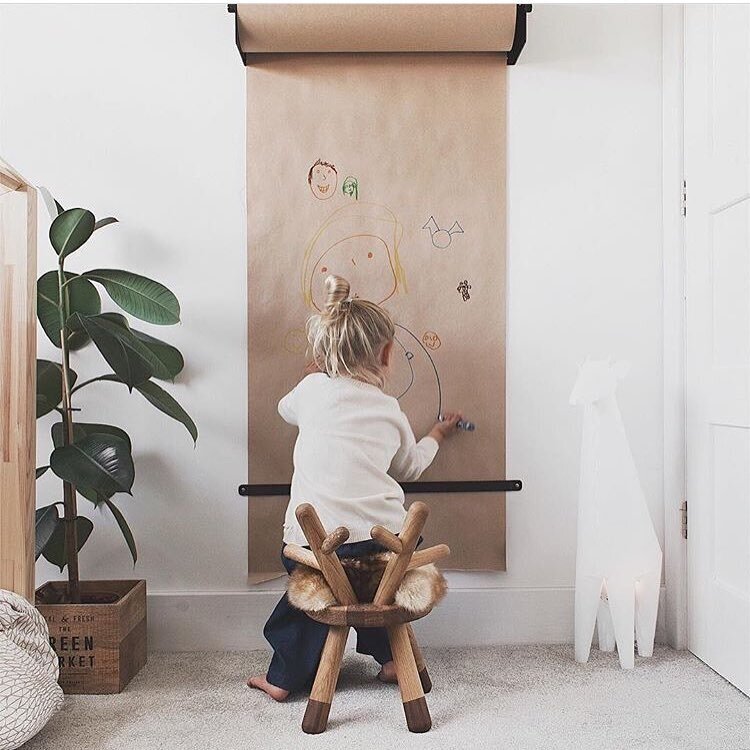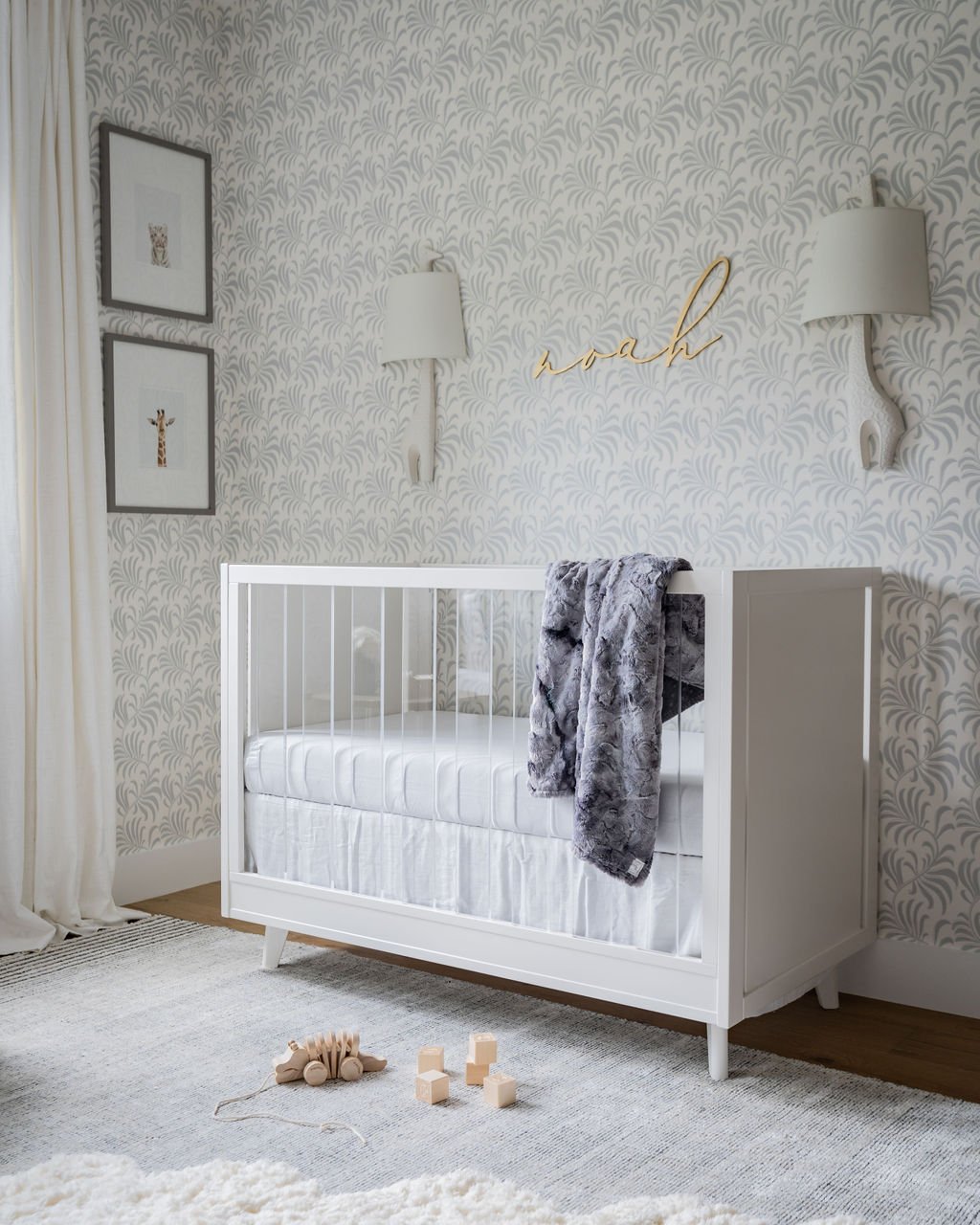6 MUST-HAVE DESIGN TIPS TO INSPIRE LEARNING & PLAY!
From the moment children are born, they are learning. It is often heard that a parent is their child’s first teacher. Children are eager to learn new things and are even more excited when their parent supports, encourages, and participates in their learning journey. Still, I’m not just talking about flashcards and activity workbooks – but let’s think on a more grand and imaginative scale here. Why not help your child’s developmental milestones by creating a space at home that taps into all areas of their development? A space that not only supports their growth and learning, but also looks spectacular!
Now, I’m also not suggesting purchasing every educational toy on the market and throwing it in a room. The thought of an array of random toys and items strewn all over the place in an unorganized fashion gives me a headache. No, thank you! It is also overwhelming for children to be in such chaos. Thoughtfully selected furniture and other pieces that not only look cool enough to leave out (specifically avoiding those plastic primary colored toys – you know what I’m talking about), yet serve an educational purpose and create new interests can foster growth at any age. Below are some examples, used or loved by Rockabye Mommy, to show how designs can inspire learning and play.
Activity Table
For starters, any table is a must-have in a playroom. Not only does it provide a place for many activities, including drawing and play dough, but many come with a built-in paper dispenser. The roll is large and can be stretched to provide ample table coverage for potentially messy activities, allowing for massive canvas creativity. Want to mix things up? Some rolls can be mounted to a wall, allowing your child to stand and color instead of sitting down. Leave the finished masterpiece dangling for a touch of wall art.
Reading Bench
Opportunities for growth can be in simple furniture pieces placed in a room. The bench you put in the room as a reading area can help your child develop gross motor skills. Stored toys or books in the benches’ lower cubbies can encourage an infant to crawl towards those objects. Eventually, your child will use it as a support to pull to a standing position, and even eagerly cruise along to get closer to you! Your child will continue to use their skills to climb onto the bench to sit and read a book or two with you. Bonus – placing activities or objects back in the cubbies teaches your child organizational skills.
Sensory Wall Panel
A sensory wall panel is a great item to add to a room. Not only does it add an educational element geared toward fine motor and cognitive skills, but some designs also add sophistication without having to hang primary colors on your walls that conflicts with your color scheme. Anchoring the learning panel to the wall clears it from the floor and places it at your child’s perfect height and ready for play.
Look for these activity panels in an upcoming Rockabye Mommy playroom!
Murals and Pretend Play
And how about that wall mural? Didn’t think it could also serve as an excellent backdrop to a play or puppet show, did you? The volume of imagination that goes into pretend play is astounding - opening up your child to a world of art and creativity. Plus, can you imagine the cutest pics you will have to showcase to your family and friends! Cognitive and social development are practiced when children use their imagination, the mural is just an added design feature.
Room designed by Rockabye Mommy.
Rock Walls
Wanna incorporate an activity that supports gross motor development and perhaps lets your child burn off some energy? Indoor rock walls are pieces to add to a room that will certainly catch your child’s eye and add tons of fun. Who doesn’t love scaling a wall like Spiderman? Rock walls not only provide a full-body workout, but it also allows your child to use problem-solving techniques, learning just the right placement of their hands and feet to reach the top. It’s also a great activity to have handy on a snowy or rainy day. We designed a boys room several years ago with a rock wall below and it is still one of our favorites!
Room designed by Rockabye Mommy. Concept above, actual room below.
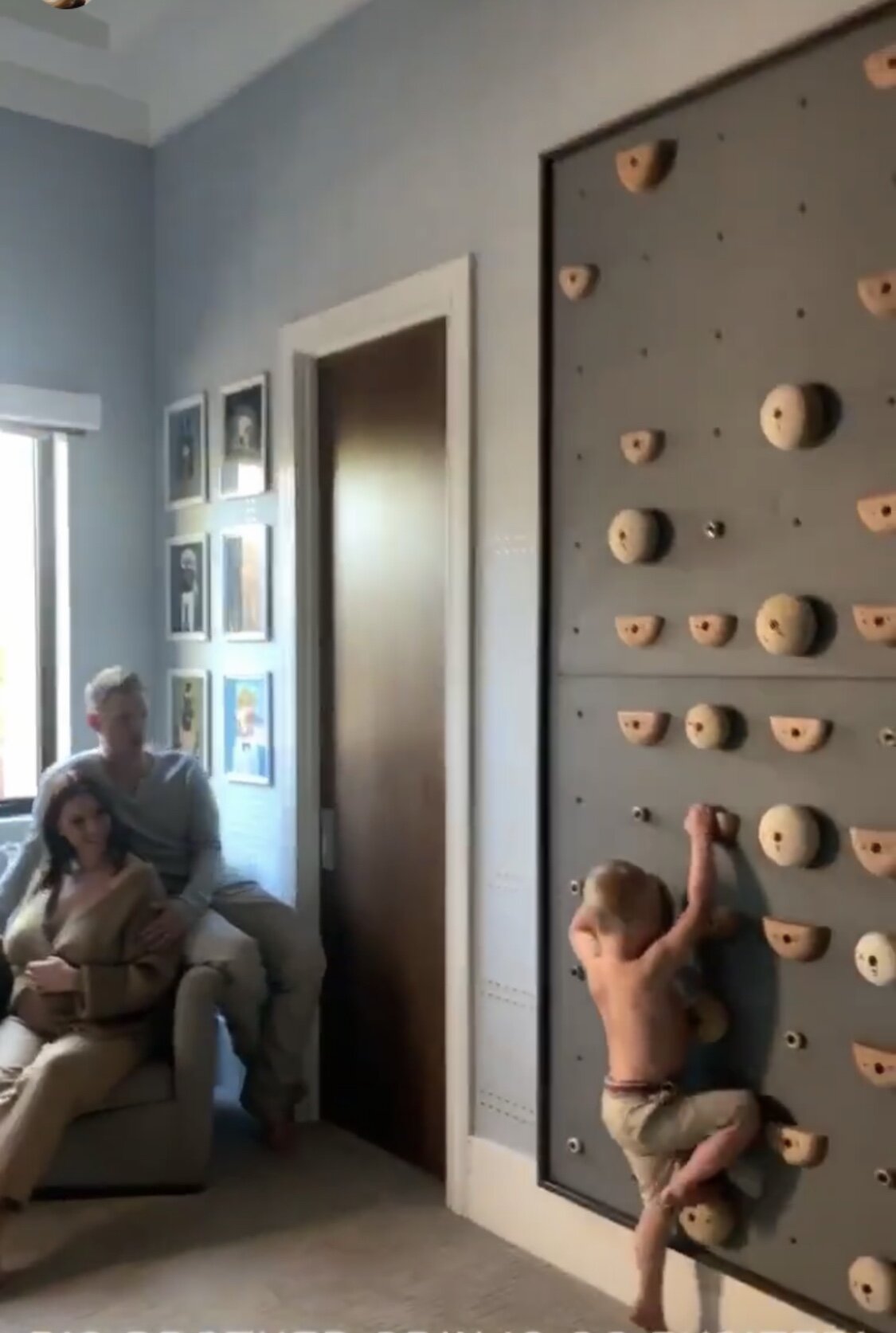
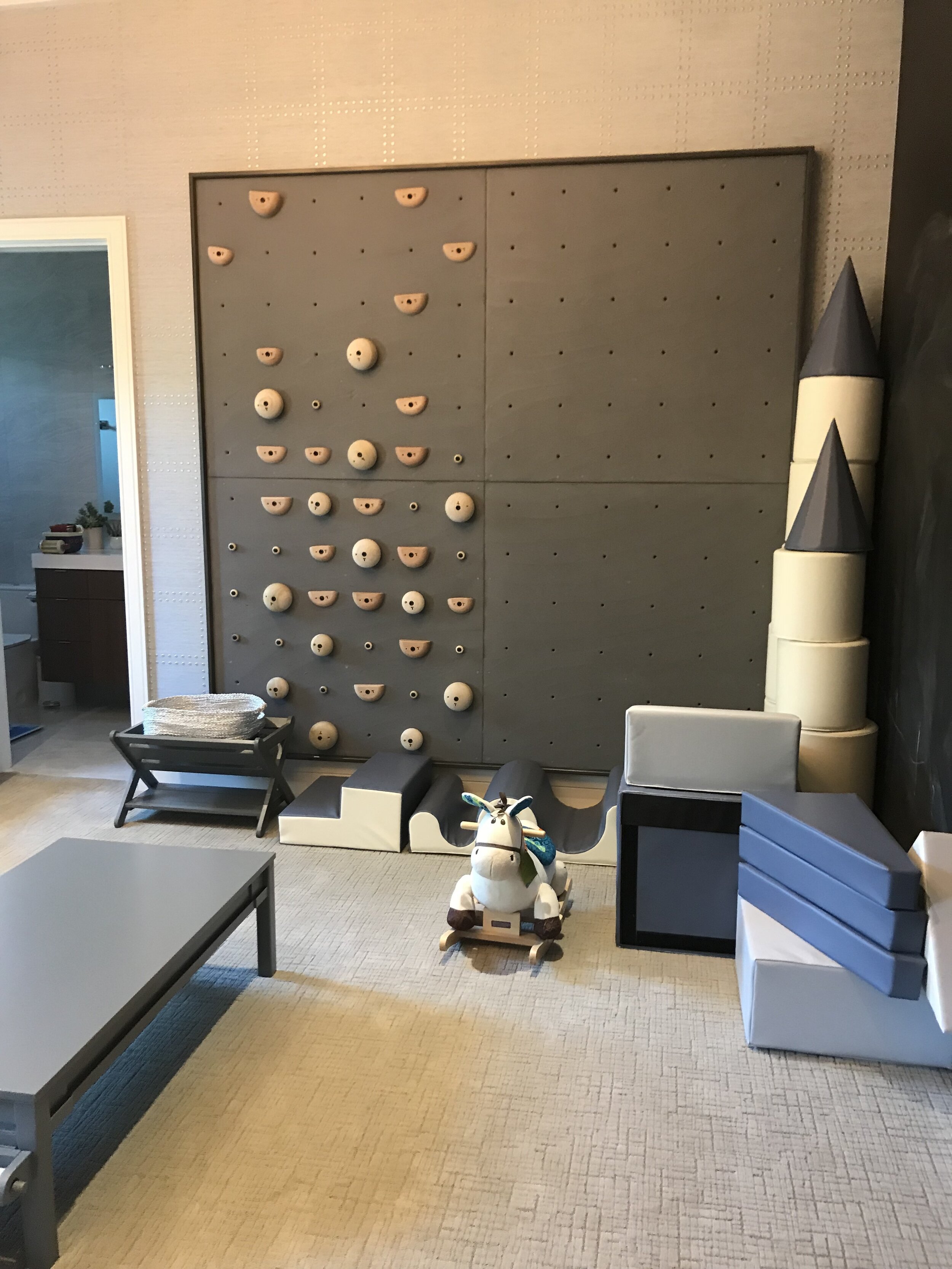
Play/Activity Mats
Lastly, play mats are so versatile. They start out as an essential item for infants when practicing tummy time, providing a cushioned surface when learning to lift their head, strengthening their neck, back, and arms – but it doesn’t stop there. Play mats can grow with your child and provide a world of opportunities to support all areas of your child’s development, perhaps eventually turning into another soft reading area for years to come. Add multiple play mats together to create a larger play space, or if your play mat isn’t too large, it’s perfect for taking along to adventures outside of the home.
Toki Mats - One of our favorite non-toxic children’s room playmats.
Creating a space for your child is beneficial to develop essential skills, but don’t forget to follow your child’s lead! Children learn best when they are engaged in activities that excite them, so your interest in their activity selection will aid in their learning process. And when you decide to design your child’s space, make sure your child knows you are always there to play along and inspire them!
Let us know below in the comments if your kids have a favorite at-home learning activity or if there is something else you’ve seen that’s on your wish list!
Priscilla Avila
Priscilla has worked in the field of social services for ten years, working in programs focused on child welfare. Priscilla has a bachelor's degree in Psychology and a bachelor's degree in Human Development with an emphasis in child development.

